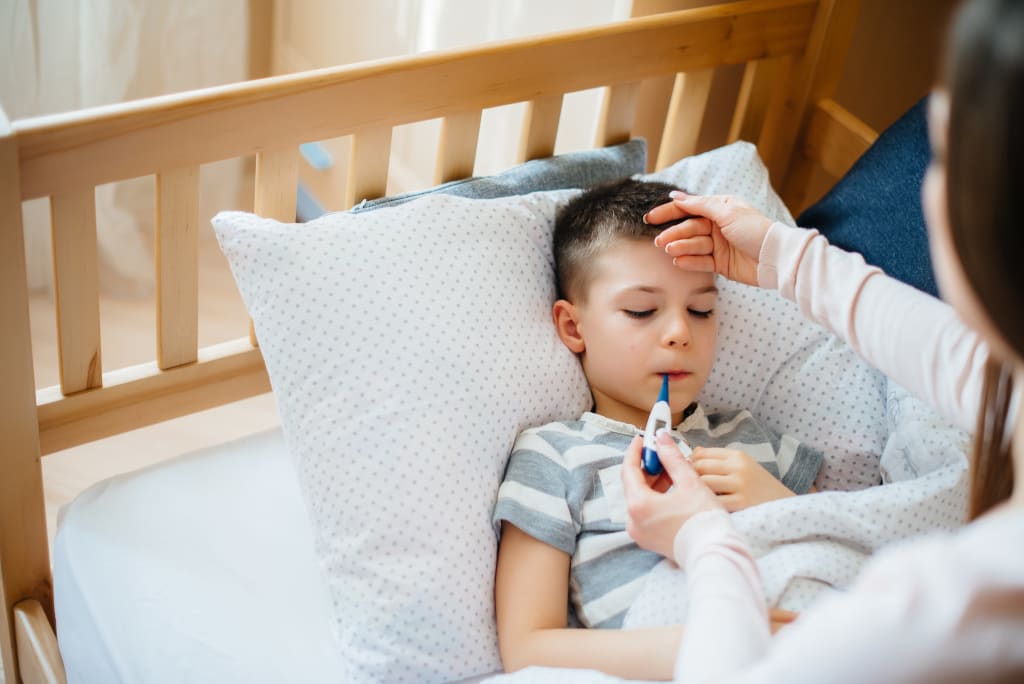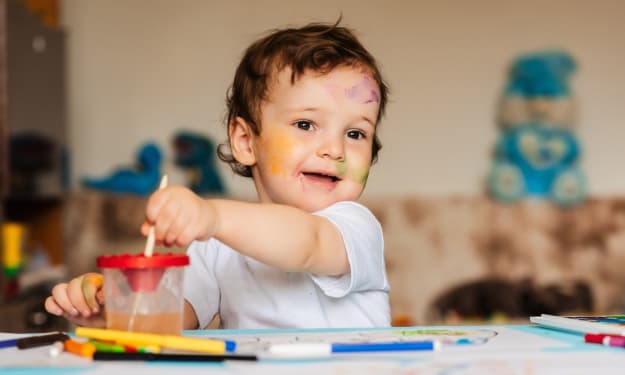Basic First Aid Tips And Resources For Common Childhood Injuries And Illnesses
Common Childhood Injuries And Illnesses

Children need extra protection and care while they move around and play. Minor injuries can affect their health and cause distress to the parents. This can also affect their learning, especially when they are at preschool centers. As a parent, your duty is to learn the basic first aid tips that can nurse the common childhood injuries. Children diagnosed with asthma, diabetes, allergies, seizures, and other dreadful illnesses may need extra care and protection. However, we will only focus on the childhood injuries that most children encounter in their early development years.
Parents often seek admission for their kids in a play school center. A play school center or play group is a school meant for kids who have not started going to school yet. The admission in such schools is done to impart basic skills like counting. A child’s ability to learn new things and adjust in classroom settings are polished in a preschool center. However, some common injuries might affect their learning process. As a parent, you must take the right steps to help them recover without any further issues. Failing to do so, might aggravate their injuries or lead to other side effects or serious issues later. The common childhood injuries and related first aid treatment are explained in the below sections.
1. Head injuries
Head injuries can be minor or severe. Based on the severity of the injury, you must take the appropriate steps to heal your child.
Signs & Symptoms
Some or all the below symptoms can be encountered in a child who has suffered a head bump or injury:
- Sleepiness or drowsiness
- Failing to walk properly
- A state of confusion
- Mild or severe headache
- Vomiting
- Becoming unconscious (for a while)
First aid tips & resources
The following first aid tips might help you provide immediate help to your child:
- Check the child’s neck and head for visible marks of injury. The neck may get hurt during a head injury. If the injury is severe or makes the child lose its consciousness, contact emergency help services immediately.
- For minor scratches and bumps, you can hold an ice pack wrapped in a towel over the swollen area. It will prevent swelling. In the absence of an ice pack, you can even use frozen peas.
- Do not administer any drugs or medicine on your own. Check whether your child starts behaving normally or has developed a concussion due to the head injury. In any case, it is better to take advice from an expert.
2. Allergies
Allergies can be caused due to an insect bite, food, dust, or exposure to certain chemicals. Children with known allergies can be treated with the appropriate medicine recommended by a doctor. For basic allergies caused due to food, dust, or insect bites, you can follow the below tips and advice!
Signs & Symptoms
Check these signs and symptoms before giving a first-aid treatment to your child:
- Look for signs like rashes on skin and tissue swelling first. Examine the hands and legs because these are the most common places for getting insect bites or allergic reactions.
- Itching in the eyes, water eyes, itchiness in the throat, wheezing or coughing, etc. are some other symptoms to look for.
- Nausea, vomiting, swelling of lips, hives and rashes that appear quickly on the body can be the signs of severe allergic reactions.
First aid tips and resources
Ask your child to sit in a comfortable position. Let it breathe normally for a while.
- Observe the child and check if the symptoms are getting worse. Contact for emergency health services or rush to a doctor if the child is not recovering.
- If the child has sustained an injury due to the insect bite, locate the sting and examine it properly. If there is a stinger in the place of injury, remove it immediately. Hold an ice pack wrapped in a cloth over the area to reduce pain and swelling.
- Nasal sprays, eye drops, and antihistamines can be administered to get rid of allergies quickly. However, these medications are to be given only under the supervision of a doctor.
3. Tooth injury
If your child’s mouth is bleeding, it could be due to a tooth injury or chipping. It is always recommended to consult a dentist in such situations. However, you can still offer some first aid help to provide immediate relief to your child.
Signs & Symptoms
- Check whether the tooth has been chipped or knocked-out.
- Check for other injuries on lips, tongue, and other areas of mouth.
First aid tips and resources
- Use a clean cloth or paper towel to stop the bleeding immediately.
- If needed, make the child rinse the mouth so that the blood clears out and the injury marks become visible.
- Store the knocked-out tooth in a sealed bag or container. Let it be soaked in saliva or milk.
- Rush to a dentist immediately or call for emergency services.
4. Nose Injuries
Nose injuries can be painful and cause a lot of bleeding. It is not hard to recognize a nose injury due to the profuse bleeding.
Signs & Symptoms
Examine the area of injury to determine whether it is of mild or severe kind.
First aid tips and resources
- Ask your child to tilt the head forward. Stop the bleeding immediately by using a cotton pad. Touch below the nose bone lightly to check if the bone is damaged.
- Don’t stuff the cotton deep in the nostrils. Also, do not make them lean back as it may cause the blood to enter the throat.
- The bleeding could stop with the application of nasal ointments or sprays. However, if the bleeding continues after 30 minutes, it is better to consult a doctor.
5. Eye Injury
An eye injury can be traumatic and severely painful for a child. Check for the below signs and symptoms of eye injuries.
Signs and symptoms
The child might rub the eyes or the eyes might be tearing up quickly.
First aid tips and resources
- If there is a direct impact, don’t force the child to open the eyes. Rush to a hospital immediately or consult emergency eyecare services.
- If the injury is less severe, wash the eyes with tap water and clear the blood. Look for any injury marks inside the eyes.
6. Wounds and Cuts
Wounds and cuts can cause bleeding or rashes. Sometimes, the wound can be internal and cause swelling.
Signs & Symptoms
- Check the severity of the wound or cut. Ask the child to point out the object due to which it has sustained the cut or wound.
- Ask the child whether the bone is hurting. If the child faces any difficulty while moving the arms or legs, it might be a fracture.
First aid tips & resources
- Clean the wound with water and a mild cleaning agent. Rub dettol or any antibacterial ointment on the wound. Use a bandage to stop the bleeding. In the absence of a bandage, place a cotton ball over the wounded area and wrap it with a clean towel.
- If the wound or cut is big, it may need stitches. So rush to the doctor immediately after administering some first aid medicine.
Conclusion
These were some common childhood injuries and ways to deal with them. We hope that you have understood how to provide first-aid treatment when your child is injured or ill. When sending your child to play school summer camps, ensure that they have all the first-aid supplies and medicine to cure the injured children.
About the Creator
Aman Ansari
Footprints Childcare is the best Play School & Day Care creche run by IIT-IIM Alumni. We strongly believe that every child is unique and deserves the best possible start in life.
Enjoyed the story? Support the Creator.
Subscribe for free to receive all their stories in your feed. You could also pledge your support or give them a one-off tip, letting them know you appreciate their work.






Comments
There are no comments for this story
Be the first to respond and start the conversation.